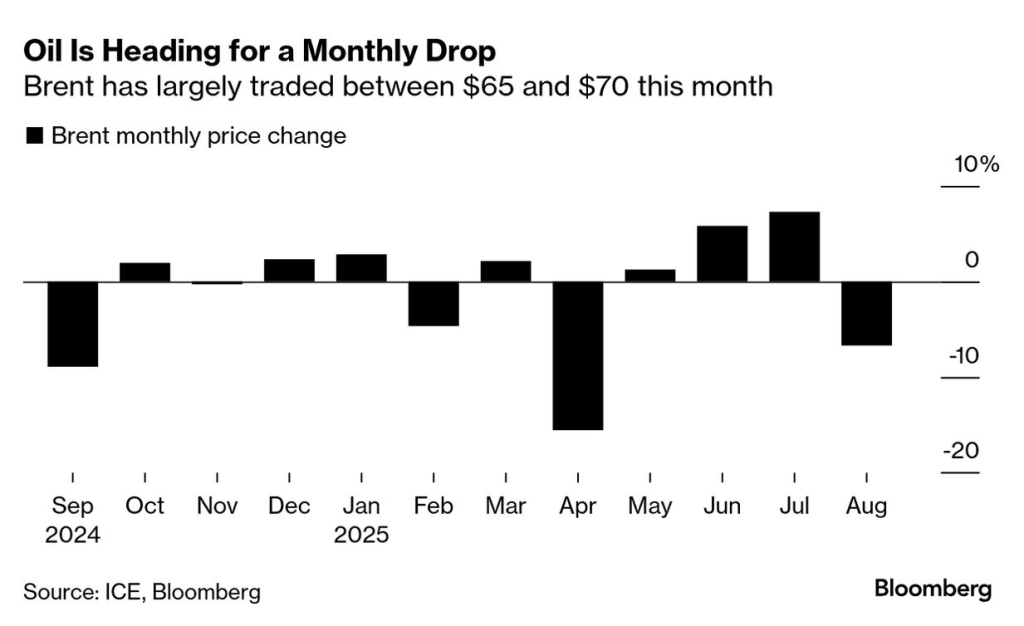- The end of the US driving season can bring with it a sudden drop in demand.
- Data revealed a bigger-than-expected increase in US crude inventories.
- Fed’s John Williams said a rate cut is possible.
Oil prices fell on Thursday as market participants anticipated a looming drop in demand with the end of the US driving season. However, optimism supported prices in the previous session after data revealed a significant draw in US crude oil inventories.

Brent monthly performance (Source: ICE, Bloomberg)
Oil was heading for a monthly drop on Thursday after a weak month. The US driving season is usually a bullish time for oil as demand, especially for gasoline, surges. Therefore, the end of the season can lead to a sudden drop in demand, which negatively impacts oil prices. Market participants believe the US driving season will end during the upcoming Labor Day holiday. As a result, the anticipation of weaker demand weighed on the oil market.
However, oil rose in the previous session after data revealed a bigger-than-expected increase in US crude inventories. Stocks rose by 2.4 million barrels, compared to the forecast of 1.9 million barrels, indicating solid demand in the previous week.
At the same time, the conflict between Russia and Ukraine escalated, driving up oil prices. Russia sent drones that destroyed energy and gas infrastructure in Ukraine. An escalation in the war would continue to support the oil industry. On the other hand, an end to the war could lead to higher prices.
Meanwhile, market participants also paid attention to remarks by Fed officials, which have become more dovish. John Williams said a rate cut is possible, leading to increased expectations for a rate cut. However, he noted that it would depend on economic data. Lower borrowing costs are bullish for oil because they spur economic growth and increase demand.
Recent data has shown that the US economy has slowed down significantly, especially in the labor sector. At the same time, inflation is softer. As a result, there is a high chance the Fed will deliver a rate cut in September. However, the upcoming core PCE report and the nonfarm payrolls reports could alter this outlook. If inflation remains soft and the labor market continues to show further weakness, traders may expect a larger rate cut. On the other hand, upbeat reports would ease rate cut expectations and hurt oil prices.
Meanwhile, the conflict between Trump and the Fed escalated when he threatened to fire a Fed official. This led to a decline in the dollar, which made oil a bit cheaper for foreign buyers.



